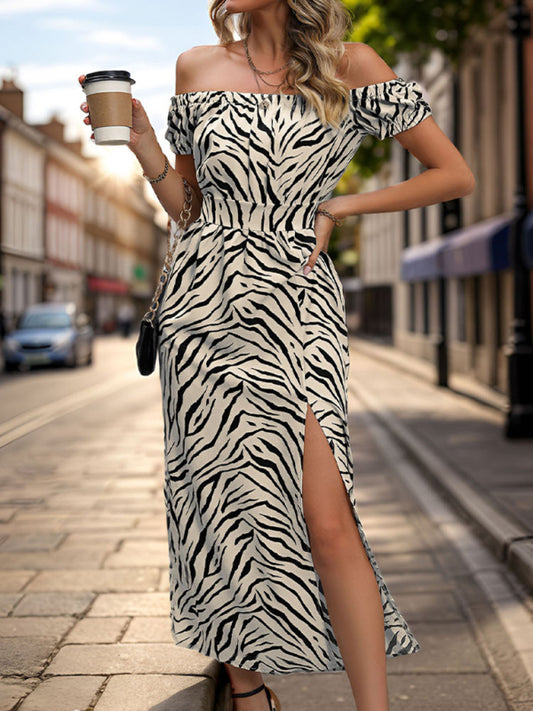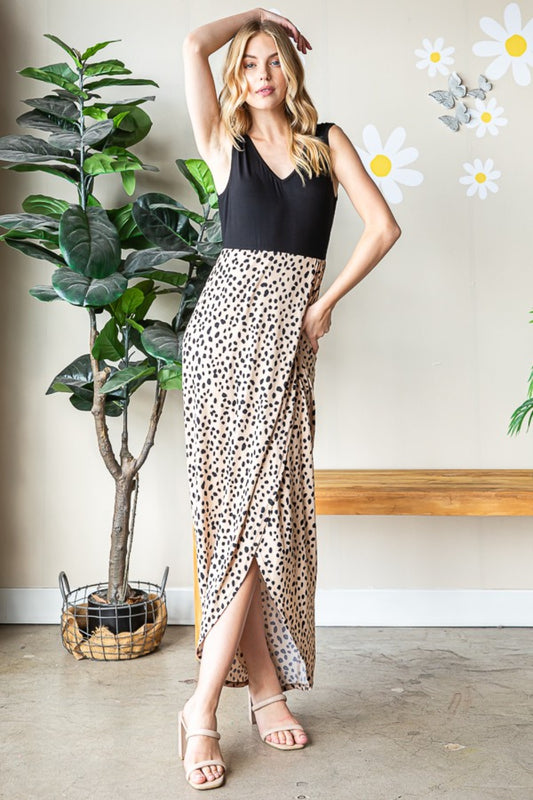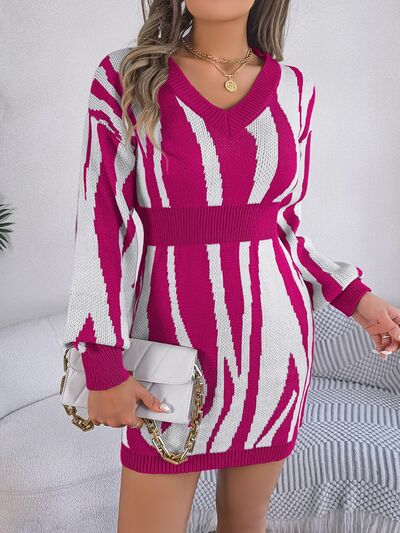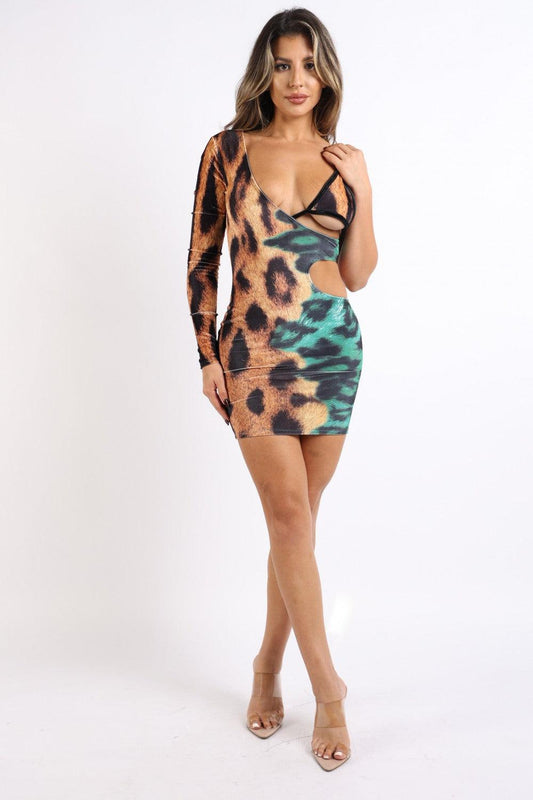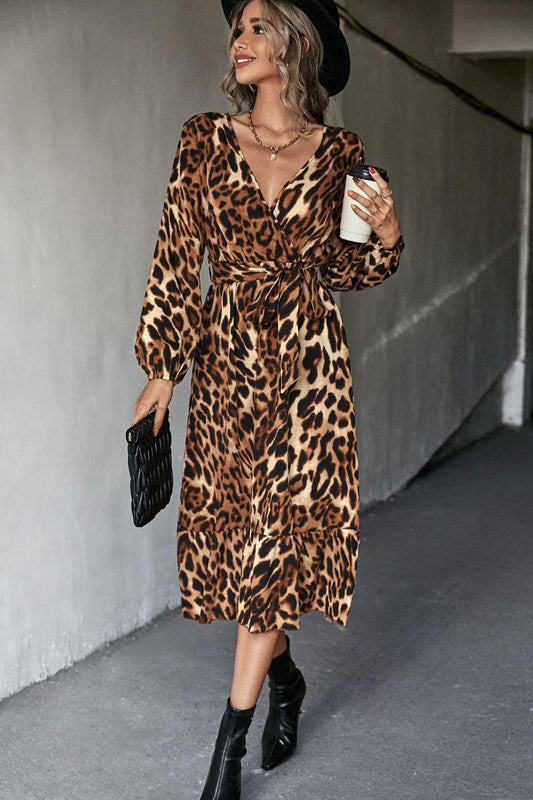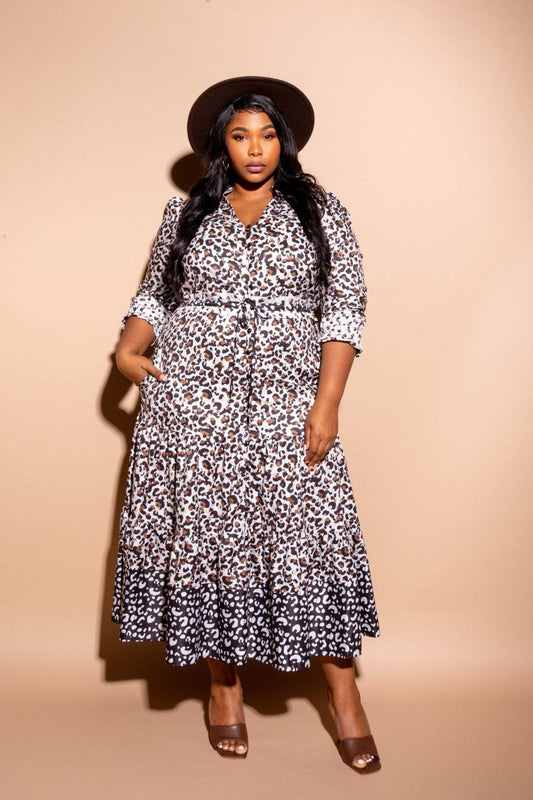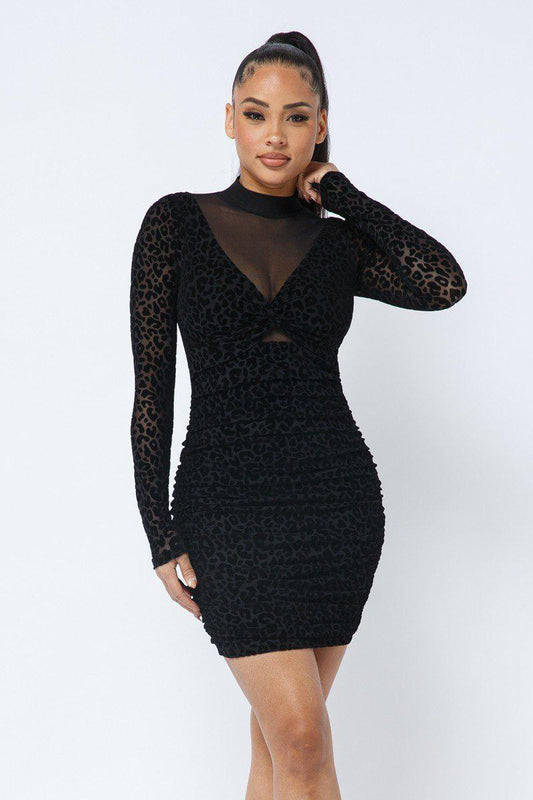Shop Animal Print Dresses
-
Umgee Animal Print Boho Tunic Dress with Contrast Trim Detail
Regular price £61.00 GBPRegular priceUnit price / per£122.00 GBPSale price £61.00 GBPSale -
Animal Print Sweater Dress Body Con
Regular price £77.00 GBPRegular priceUnit price / per£154.00 GBPSale price £77.00 GBPSale -
Animal Print Long Sleeve Midi Dress
Regular price £41.00 GBPRegular priceUnit price / per£82.00 GBPSale price £41.00 GBPSale -
Animal Print Mock Neck Flounce Sleeve Dress
Regular price £46.00 GBPRegular priceUnit price / per£92.00 GBPSale price £46.00 GBPSale -
Animal Print Balloon Sleeve Dress
Regular price £29.00 GBPRegular priceUnit price / per£57.00 GBPSale price £29.00 GBPSale -
Davi & Dani Animal Printed Velvet Ribbon Mini Dress
Regular price £57.00 GBPRegular priceUnit price / per£113.00 GBPSale price £57.00 GBPSale -
Mittoshop Animal Print Puff Sleeve Mini Dress
Regular price £51.00 GBPRegular priceUnit price / per£102.00 GBPSale price £51.00 GBPSale -
Mittoshop Animal Print Puff Sleeve Mini Dress
Regular price £51.00 GBPRegular priceUnit price / per£102.00 GBPSale price £51.00 GBPSale -
Animal Print Scoop Neck Midi Cami Dress
Regular price £31.00 GBPRegular priceUnit price / per£61.00 GBPSale price £31.00 GBPSale -
Umgee Full Size Animal Print Button Down Midi Shirt Dress Plus Size
Regular price £38.00 GBPRegular priceUnit price / per£75.00 GBPSale price £38.00 GBPSale -
Heimish Full Size Short Sleeve Off Shoulder Animal Mini Dress Plus Size
Regular price From £29.00 GBPRegular priceUnit price / per£57.00 GBPSale price From £29.00 GBPSale -
Blue Zone Planet | Plus Wild Animal Print Cami Strap Ruffle Hem Dress
Regular price £29.00 GBPRegular priceUnit price / per£58.00 GBPSale price £29.00 GBPSale -
Blue Zone Planet | Devine Slit Animal Print V-Neck Half Sleeve Dress
Regular price £37.00 GBPRegular priceUnit price / per£56.00 GBPSale price £37.00 GBPSale -
Animal Print Round Neck Balloon Sleeve Mini Dress
Regular price £25.00 GBPRegular priceUnit price / per£40.00 GBPSale price £25.00 GBPSale -
Blue Zone Planet | Long Sleeve Leopard Animal Print Shirt Dress
Regular price £41.00 GBPRegular priceUnit price / per£71.00 GBPSale price £41.00 GBPSale -
Blue Zone Planet | Fay's Animal Printed Bandage Mini Dress
Regular price £108.00 GBPRegular priceUnit price / per£152.00 GBPSale price £108.00 GBPSale -
Blue Zone Planet | Heimish Full Size Sleeveless Animal Print Mini Dress
Regular price £46.00 GBPRegular priceUnit price / per£62.00 GBPSale price £46.00 GBPSale -
Blue Zone Planet | Animal Print Boat Neck Dress
Regular price £39.00 GBPRegular priceUnit price / per£59.00 GBPSale price £39.00 GBPSale -
Blue Zone Planet | Heimish Full Size Slit Animal Print V-Neck Wide Strap Dress
Regular price £40.00 GBPRegular priceUnit price / per£55.00 GBPSale price £40.00 GBPSale -
Animal Print V-Neck Long Sleeve Sweater Dress
Regular price £33.00 GBPRegular priceUnit price / per£48.00 GBPSale price £33.00 GBPSale -
Multicolored Animal Print Bodycon Cutout Mini Dress
Regular price £34.00 GBPRegular priceUnit price / per£67.00 GBPSale price £34.00 GBPSale -
Animal Print Belted Midi Dress
Regular price £28.00 GBPRegular priceUnit price / per£46.00 GBPSale price £28.00 GBPSale -
Contrast Animal Print Shirt Dress
Regular price £92.00 GBPRegular priceUnit price / per -
Animal Print Long Sleeve Mock Neck Mini Dress
Regular price £48.00 GBPRegular priceUnit price / per
Collection: Shop Animal Print Dresses
The Roaring Trend: Animal Print Dresses in Modern Fashion
In the landscape of contemporary fashion, where trends ebb and flow with the moon’s phases, one motif has proved its resilience and adaptability: the animal print dress. This pattern, which once draped the royalty of ancient civilizations and later became a symbol of status in the 18th century, has transformed into a staple of the modern wardrobe. Today, it's not just a print but a declaration of confidence, a nod to the wild, and a resilient fashion statement that has outlasted many of its contemporaries.
The recent surge in the popularity of animal print dresses can be attributed to several factors. Social media influencers, celebrities on red carpets, and street-style stars have embraced the trend, showcasing the versatility of animal prints. Designers have reimagined these patterns in various forms, from the classic leopard spots and zebra stripes to more abstract renditions that merely suggest a feral origin. This innovation has kept animal prints fresh and exciting, allowing them to maintain their status as a beloved choice among the fashion-conscious.
The allure of animal prints lies in their inherent duality. They are timeless and on-trend, bold yet neutral, sophisticated, and edgy. This paradoxical nature makes them uniquely flexible; animal print dresses can be styled down with sneakers and a denim jacket for a casual brunch, or paired with stilettos and a sleek blazer for an evening affair. It is this sartorial adaptability that has cemented their place in both high fashion and everyday streetwear.
Moreover, the digital age has democratized fashion in unprecedented ways. Fast-fashion retailers and online boutiques have made animal print dresses more accessible to a wider audience, ensuring they are not just reserved for the elite. Brands are also conscious of ethical concerns, with many opting for synthetic materials that mimic animal patterns, promoting cruelty-free fashion.
However, the trend is not without its critics. Some argue that animal prints can easily venture into the territory of the tasteless if not worn judiciously. There is a fine line between a chic leopard print midi dress and an over-the-top costume that lacks sophistication. The key, as with any statement piece, is balance and context.
The embrace of animal prints is also a reflection of societal shifts. In a time where personal expression and individuality are celebrated, these patterns offer a canvas for self-expression. They are unapologetically loud and command attention, much like the social media era itself. This may be why they resonate so deeply with the current generation, which values uniqueness and the freedom to stand out.
Moreover, the trend is cyclical, often resurfacing in times of social and economic stability. It serves as a barometer of confidence; when people feel bold and optimistic, they are more likely to don equally bold patterns. The current renaissance of animal print dresses could be indicative of a broader mood of resilience and audacity in the face of global challenges.
Sustainability is another crucial angle. The fashion industry is under scrutiny for its environmental impact, and the rise of animal prints coincides with a growing interest in sustainable fashion practices. Consumers are increasingly aware of the implications of their sartorial choices, seeking out brands that align with their values. In response, some brands incorporate animal prints into collections that prioritize eco-friendly fabrics and ethical manufacturing processes.
The trend also carries cultural significance. Animal prints often hark back to the prints' origins, drawing inspiration from African, Asian, and South American fauna. This global influence is a nod to the interconnectedness of the fashion world and its ability to cross cultural boundaries.
The animal print dress seems poised to continue its reign as we look ahead. Its ability to evolve, to be reinvented by designers, and to be reinterpreted by those who wear it suggests that it will remain a fixture in the fashion landscape. It is more than a print; it is a canvas on which the story of modern fashion is being painted.
In conclusion, the popularity of animal print dresses is not a mere fluke but a testament to their enduring appeal and adaptability. They encapsulate a spirit of boldness and resilience that resonates with the zeitgeist of our times. As fashion continues to evolve, one can be certain that animal prints will adapt and thrive, remaining as relevant as ever in the ever-changing tapestry of style.
Key Points to Remember:
1. Timelessness: Animal print dresses have a longstanding history in fashion, continuously being reimagined to stay relevant and appealing in the modern day.
2. Versatility: Their ability to be dressed up or down makes animal prints a versatile choice for consumers, fitting various occasions and personal styles.
3. Societal and Cultural Resonance: The trend reflects broader societal trends towards individual expression, cultural interconnectedness, and a growing commitment to ethical and sustainable fashion practices.
Frequently Asked Questions (FAQs) about Animal Print Dresses
Q: Why have animal print dresses become so popular recently?
A: Animal print dresses have surged in popularity due to their versatility and the influence of social media, where celebrities and influencers often showcase these prints. They offer a bold, yet neutral option for various occasions, making them a staple in high fashion and everyday wear.
Q: Can animal print dresses be considered a sustainable fashion choice?
A: The sustainability of animal print dresses depends on the brand's production practices. Many brands are now using synthetic, cruelty-free materials and adopting more ethical manufacturing processes, making them a more sustainable choice for eco-conscious consumers.
Q: Are animal prints appropriate for all ages?
A: Absolutely. Animal prints transcend age barriers and can be styled to suit any generation. The key is in the choice of dress style and how it is accessorized to fit the individual's comfort and aesthetic preference.
Q: How can I wear an animal print dress without it being overpowering?
A: To wear an animal print dress without overpowering your look, pair it with neutral accessories and keep the rest of your outfit understated. Choosing a dress with a smaller print or a more subdued color palette helps keep the look chic and sophisticated.
Q: What are some tips for choosing the right animal print dress?
A: When choosing an animal print dress, consider the scale of the print (smaller prints can be more flattering for many), the cut of the dress (something that complements your body shape), and the colors (neutral tones can be more versatile). Also, think about the fabric and the occasion you're dressing.
Q: Is mixing different animal prints in one outfit a fashion faux pas?
A: Mixing different animal prints is a bold fashion statement and can be done tastefully with a keen eye for color and scale. The trick is to balance the prints to complement rather than compete with each other. If you're new to mixing prints, start with accessories before moving on to larger pieces.
Q: Can animal print dresses be worn in professional settings?
A: Animal print dresses can be appropriate for professional settings if styled correctly. Choose a conservative cut and pair it with a blazer or cardigan in a solid color. Opt for prints that are not too loud and ensure the overall look remains polished and modest.
Q: Are there any ethical concerns associated with wearing animal prints?
A: Ethical concerns may arise if the prints are derived from real animal skins. However, most animal prints in fashion today are synthetic imitations, which do not involve harming animals. It's always best to research the brand and its manufacturing practices to ensure they align with ethical standards.
Q: How do I maintain the quality of my animal print dress?
A: To maintain the quality, follow the care instructions on the label closely. Generally, it's advisable to wash in cold water, use gentle detergents, and avoid tumble drying to prevent the print from fading and the fabric from wearing out.
Q: Can animal prints go out of style?
A: While specific trends in fashion come and go, animal prints have shown remarkable staying power throughout the decades. They have become a sort of "new neutral," akin to stripes or plaid, suggesting they will likely remain a fashion staple for years to come.




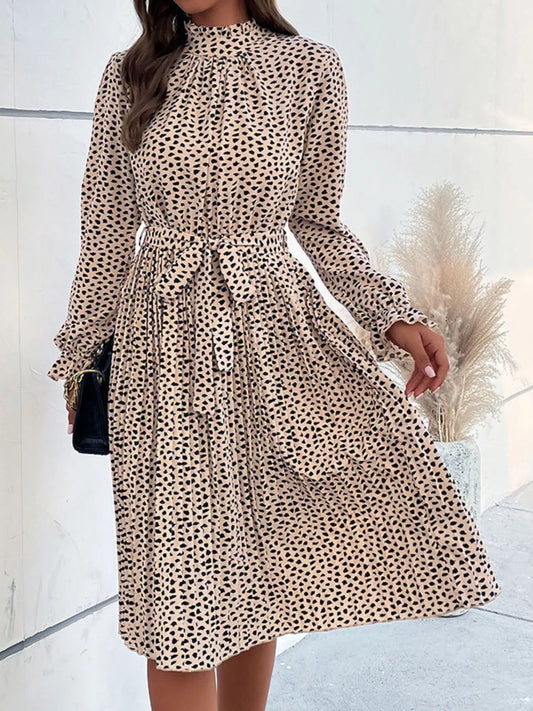
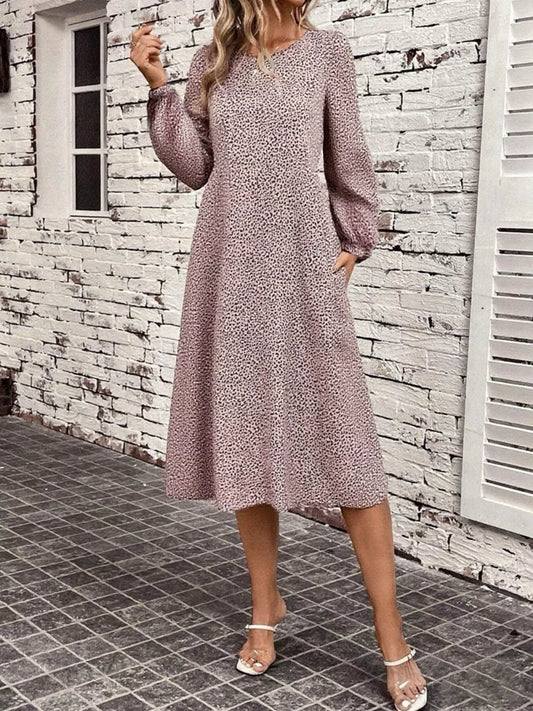





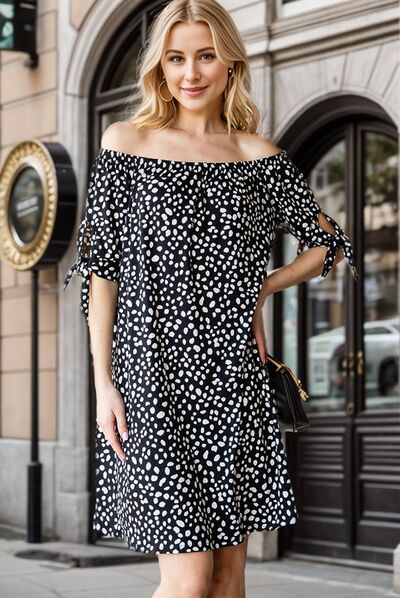
![Blue Zone Planet | Plus wild animal print cami strap ruffle hem dress-TOPS / DRESSES-[Adult]-[Female]-Burgundy-1XL-2022 Online Blue Zone Planet](http://bluezoneplanet.com/cdn/shop/files/CC58950A.jpg?v=1731907235&width=533)
![Blue Zone Planet | Devine Slit Animal Print V-Neck Half Sleeve Dress-TOPS / DRESSES-[Adult]-[Female]-Blush Pink-S-2022 Online Blue Zone Planet](http://bluezoneplanet.com/cdn/shop/files/fa5c1bbb-d265-456b-9cb2-822ad8c29ba8-Max.jpg?v=1726028995&width=533)
![Animal Print Round Neck Balloon Sleeve Mini Dress-TOPS / DRESSES-[Adult]-[Female]-Black-S-2022 Online Blue Zone Planet](http://bluezoneplanet.com/cdn/shop/files/21eec6e4-efc8-4653-8346-5b22b310935e-Max.jpg?v=1723060843&width=533)
![Blue Zone Planet | Long Sleeve Leopard Animal Print Shirt Dress-TOPS / DRESSES-[Adult]-[Female]-Leopard-S-2022 Online Blue Zone Planet](http://bluezoneplanet.com/cdn/shop/files/ac4f14a8b071a3a4.jpg?v=1722319146&width=533)
![Fay's Animal Printed Bandage Mini Dress-TOPS / DRESSES-[Adult]-[Female]-YELLOW-S-2022 Online Blue Zone Planet](http://bluezoneplanet.com/cdn/shop/files/14728992_ea03930e-0552-412c-98d6-4f8ce79c0b1a.jpg?v=1719094418&width=533)
![Heimish Full Size Sleeveless Animal Print Mini Dress-TOPS / DRESSES-[Adult]-[Female]-Black-S-2022 Online Blue Zone Planet](http://bluezoneplanet.com/cdn/shop/files/b95b1573-706f-491a-a66d-4fe3db47660d-Max.jpg?v=1718678881&width=533)
